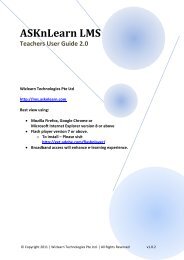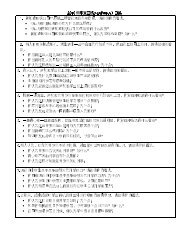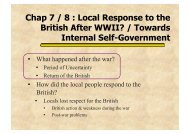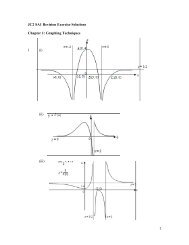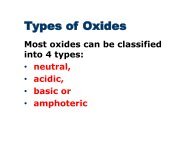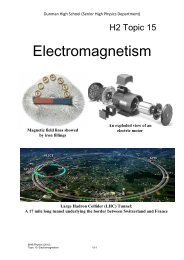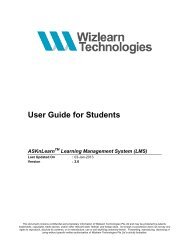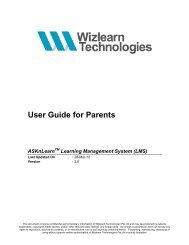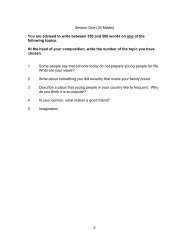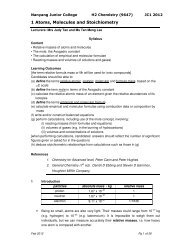Suggested Answers of BT2 Revision Package - ASKnLearn
Suggested Answers of BT2 Revision Package - ASKnLearn
Suggested Answers of BT2 Revision Package - ASKnLearn
- No tags were found...
Create successful ePaper yourself
Turn your PDF publications into a flip-book with our unique Google optimized e-Paper software.
ERP• Works by charging drivers an amount when they enter congestedareas/roads during peak hours• Targets at car usage as it allows people to own cars but only penalisesthose who enter congested roads• It is a pay-per-use principle to increase the private marginal cost <strong>of</strong>driving• Illustrate with externalities diagram how ERP works to bring the level <strong>of</strong>road usage closer to the socially optimal levelCOE is more effective than ERP in managing traffic congestion• COE directly controls the car population in Singapore. On the otherhand, ERP does not control the car population in Singapore. It merelyreduces traffic congestion in areas with ERP and diverts the problem toother roads along alternative routes not covered by ERP, hence causingtraffic congestions elsewhere.• It is easier to determine the allotment <strong>of</strong> COEs as there is a “formula” t<strong>of</strong>ollow. On the other hand, it is difficult to estimate the extent <strong>of</strong> marginalexternal cost for ERP and thus the tax rate may not be accuratelydetermined.• Relatively lower cost <strong>of</strong> implementing COE system as opposed to highcosts <strong>of</strong> setting up the gantries• As price <strong>of</strong> the COE is <strong>of</strong> a much larger amount, people are more likelyto be deterred from buying a car. On the other hand, once a car isbought, the amount deducted by ERP may seem relatively “insignificant”and people may not feel the pinch. Hence, demand for travel on affectedroads becomes price inelastic after a while as the convenienceoutweighs the ERP charge. This results in a less than proportionate fallin quantity demanded for road usage given a rise in ERP charges.ERP is more effective than COE in managing traffic congestion• COE does not control the usage <strong>of</strong> cars (which is the main cause <strong>of</strong>congestion) as car owners may view COE as a fixed cost and may wishto spread out the cost over more trips. It may encourage more usage. Onthe other hand, ERP is more effective as it tackles the root <strong>of</strong> theproblem which is excessive usage <strong>of</strong> some roads.• Moreover, the determination <strong>of</strong> allotment <strong>of</strong> COE can be flawed. Theprevious system <strong>of</strong> allotting COE had led to an almost 25% increaseinstead <strong>of</strong> the target annual 3% increase in vehicle population in the pastfive years. On the other hand, ERP is a more flexible and responsiveinstrument which can be periodically adjusted down or up depending onthe traffic speed on the roads (Extract 1)EvaluationBoth methods have their strengths and weaknesses. But in controllingcongestion, it would be more effective if we were to target car usage and toreduce the incentive for commuters to travel by car or if they still wish to travel



